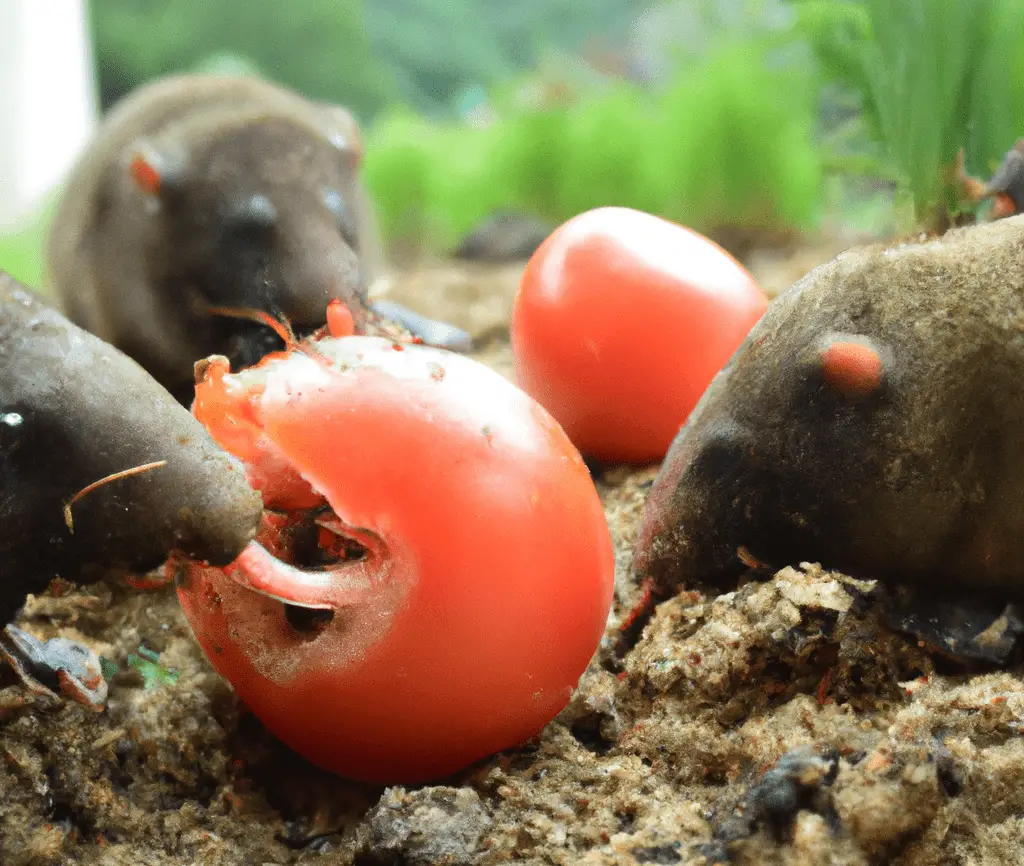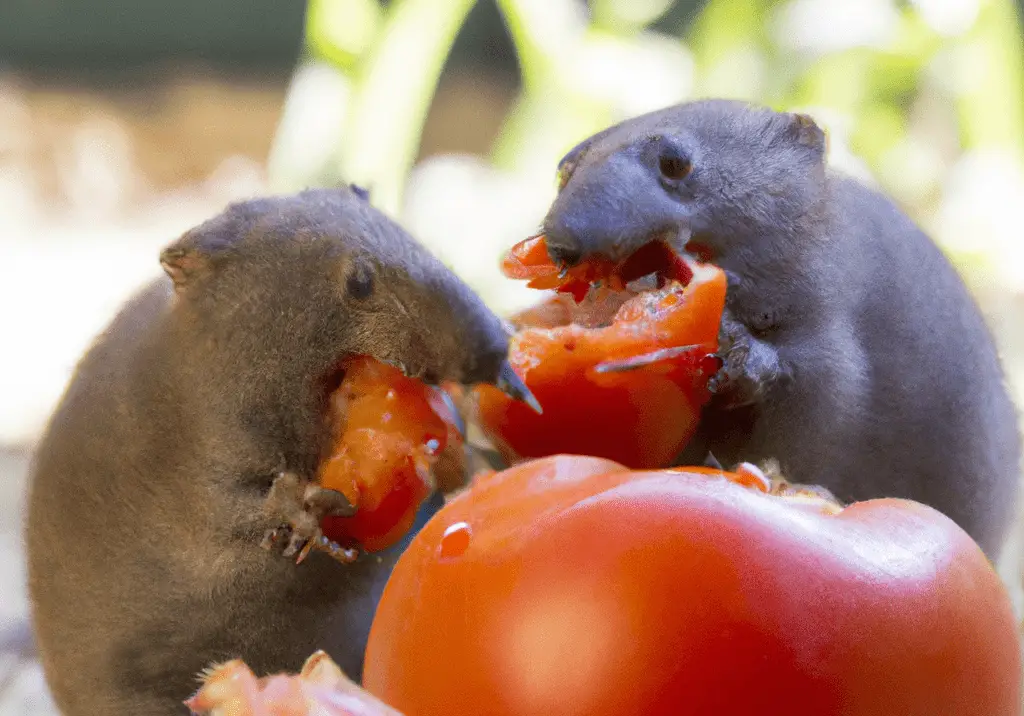Tomatoes are one of the most delicious garden treats we have access to, and our yard’s wild creatures think so too. It can be hard to keep our vegetables safe from animals and critters trying to sneak a meal. While it’s usually evident that a pest has indeed chomped on your tomato plants, knowing exactly what pest it was can be more difficult.
Moles, voles, squirrels, and birds can all come from the ground and air and eat your tomato plants. Gardening is fun, but pests eating your vegetables can get bothersome and frustrating. Damage to tomato plants can occur to the roots, stems, leaves, and fruits of plants, so action against pests must be taken.
Will Moles Eat Tomatoes?
Sometimes the easiest way to narrow down what pests are eating your tomatoes is to rule out the pest it definitely cannot be. One of the easiest pest to eliminate from tomato patch attacks are moles. Moles eat grubs and worms, not vegetables, so they will not intentionally target your tomato plants.
Even though moles don’t go after tomato plants, they can do damage at ground level and possibly kill the entire plant while looking for food. Garden beds with lots of worms and grubs can attract moles, so chicken wire can be buried several inches deep to protect vegetable roots. Tomatoes in pots that are several feet tall can’t be attacked by moles, so if you see damage to those, it is probably ground squirrels and other rodents.
What Do Moles Eat?
Since moles are likely not going to be the critters eating your tomato garden, you might be curious about what they do like. Moles are meat eaters and expert diggers. They can dig 150 ft of tunnels and eat 60 to 100% of their body weight in grub, insects, and worms every day.
Moles create tunnels all throughout lawns and gardens and can disrupt roots and kill sensitive plants. All this digging is in search of their next meal, but your plant roots often suffer the damage. In organic gardening, where lots of soil life is encouraged, and unknown pests are damaging your roots, moles are a common culprit.
Moles Vs. Voles
These two burrowing mammals are often mixed up. It is hard to tell what a creature that spends most of its life underground is like and when two are as similar as moles and voles, it gets even more difficult. Fortunately, the appearance, behaviors, and diets of moles and voles are so different that a little investigation can reveal which common pest is in your garden.
| Animal | Size | Social | Eats | Appearance |
| Mole | 4 to 7 inches long | Solitary | Grubs, bugs, and worms | Black to grayish brown fur with no grain |
| Vole | 5 to 8 inches long | Live in colonies | plant roots | A field mouse with a short tail |
Mole
Moles are small animal pests that live underground and spend their entire lives looking for food. Most moles are only 4 to 7 inches long and can eat 60 to 100% of their body weight each day. They have elongated paddle-like claws that allow them to dig extremely effectively. These common animals can cause damage to plants and bother tomato growers as they eat grubs like tomato hornworms and earthworms intermeshed in their plant’s roots.
A single 5 oz mole can eat 50 lbs of soil organisms every year, meaning these creatures live a solitary life. Similar to large predators, moles need to space out to find the necessary food needed to sustain their growth. Gardens and compost piles attract these animal pests to our yards for a bug buffet.
Vole
Similar to field mice but with shorter tails, voles are unable to dig as well as moles. Instead, they follow existing mole tunnels and then create exit holes to build their own burrows. While following the moles, voles eat the dangling plant roots that the moles ignored. Stopping moles from making tunnels in your yard can also reduce instances of voles.
Voles live in colonies and are 5 to 8 inches long. Some voles, called meadow voles, spend much of their life above ground, whereas the pine vole lives entirely underground, feeding on tree roots. Using buried tomato cages or a subterranean electric fence will stop voles from coming after your sweet tomatoes.
How to Keep Moles Out of Your Garden?

While moles will not go after your tomato fruits like skunks, squirrels, mice, and birds, they can cause damage to your plant’s roots and stems. Tomato roots are home to many different kinds of worms, grubs, and beneficial insects. As our tomato plants grow bigger, more food sources in the roots can attract moles.
If moles cannot easily get to your garden and vegetables, then they will likely find other places to hunt. If you see mole tunnels appearing throughout your yard, it is likely to only be one or two moles in the area, meaning trapping them will solve your problem.
Unlike gophers and voles that can live in groups, stopping one mole is all it takes to notice a decrease in lawn damage. Since poisons are unpredictable and unreliable live trapping or other preventative methods of mole protection are advised. Ultrasonic noisemakers and unpleasant smells can be used to deter moles already residing under your lawn.
Getting rid of moles in your lawn and garden is important, as voles can use mole holes to attack your plant roots. Stepping on mole tunnels every morning as you try to get rid of these pests is a good method to prevent vole infestation. Castor oil and other natural pesticides can be used carefully to eliminate a stubborn mole. Moles can quickly decimate the beneficial insects and worms in your garden, so blocking them from your yard is important.
Chicken wire buried several inches below the soil can stop moles from entering your garden and damaging your vegetables. If you have moles and do not want to harm them, you can encourage these pests to move to a far area of the lawn by putting composts and worm farms there. This can be used to restore compacted earth before reforestation.
Live traps can be used to bait and catch moles, but it can be difficult to target the correct rodent. Mole traps can catch other pests and may cause frustration. If you do trap a live mole, contact your local pest control agency to see if there are any rules regarding how and where to release them.


